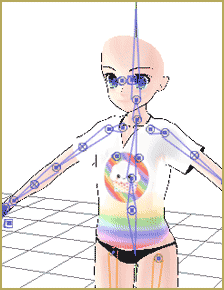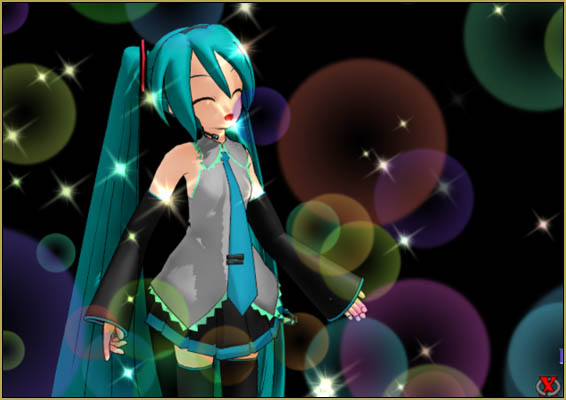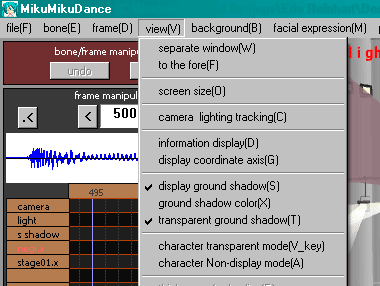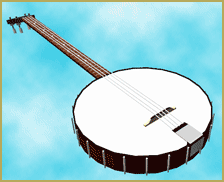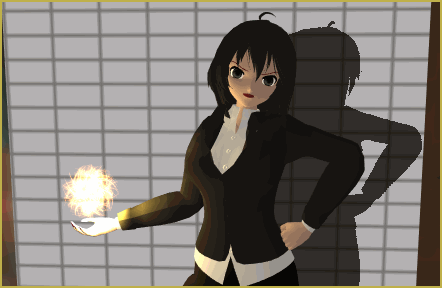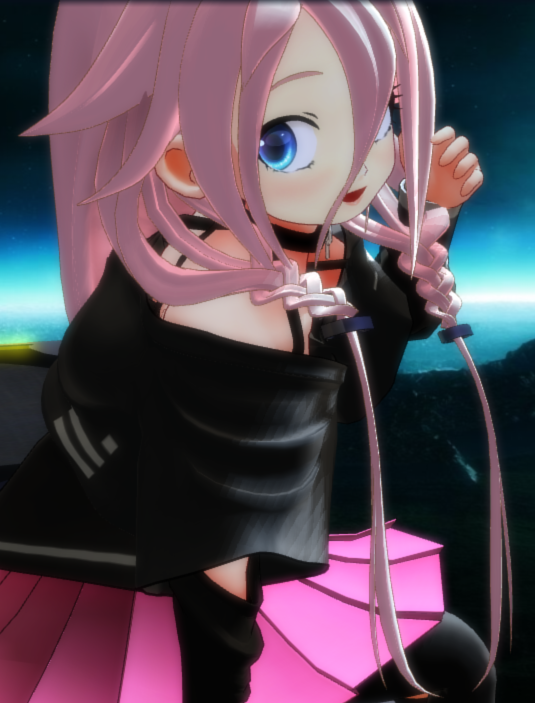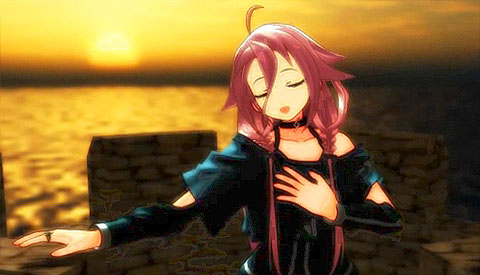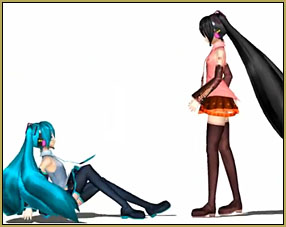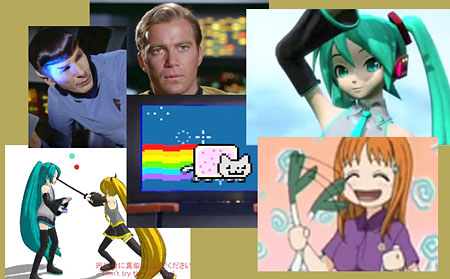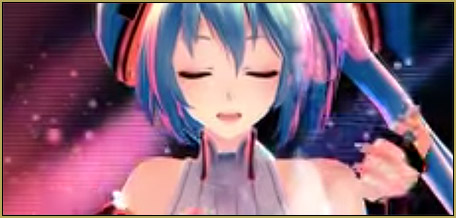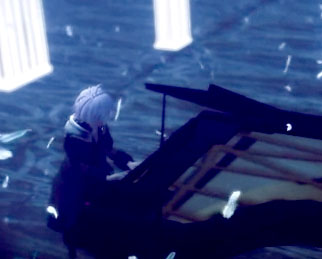![]() If you do a Google search of the term “moe”; one of the first things that you will find is that there is no one definition of the term and several of the attempts to define the term are somewhat inaccurate. Plus, even the Japanese themselves put several shades of meaning to the term and it helps here to understand what is going on if you can read Japanese characters as the term can be written in different ways depending on the intent of the writer. Since these facts are fascinating unto themselves, I will leave you to do further research for your own enlightenment.
If you do a Google search of the term “moe”; one of the first things that you will find is that there is no one definition of the term and several of the attempts to define the term are somewhat inaccurate. Plus, even the Japanese themselves put several shades of meaning to the term and it helps here to understand what is going on if you can read Japanese characters as the term can be written in different ways depending on the intent of the writer. Since these facts are fascinating unto themselves, I will leave you to do further research for your own enlightenment.
However, for our purposes, we will use the term “moe” to mean “cute“.
Unfortunately, it cannot be that simplistic either. Which is why this article will not only be useful, but fun and informative.
How exactly can we define “cute”?
If you really think about it, how exactly can you define “cute”?
It isn’t as straightforward as it may seem especially when we are dealing with cultural icons that originated in the Orient; the cultural icons that are being referred to are the anime characters as well as their demeanor.
An important question to ask is whether you are going to portray a character as being “cute” from a Western perspective or would you prefer to be more authentic to the genre in the Japanese sense?
A lot of “cute” anime characterizations done over here in the West are, or seem to be, just mere copying of the work of Japanese artists. This is a successful strategy and really a no brainer, but at the same time, can lead to rather pedestrian results. Our argument here, is that if you will just spend a little time gaining some knowledge of the concept of “cuteness” from the Japanese perspective, you might possibly get better results.
So for a brief moment, let’s just examine some typical Japanese moe characters as we would generally recognize them and the MMD comic panel below demonstrates the type.

However, you have to be very careful with this type of interpretation especially since these opinions factor in some aspects of Asian culture which are very alien to us in the West.
Most modern day characterizations of moe anime characters does use imagery of prepubescent (underage) girls. Very often, though thankfully not always, these characters are depicted in inappropriate situations to put it mildly. That, however, doesn’t necessarily mean that they are intended to cater to pedophiles. It isn’t that simple.
Anime moe art was originally predominantly developed by women.
For a start, moe characterizations also are enjoyed by female anime fans and oftentimes originated by female manga artists; several with formidable reputations. Even the concept of “moe” itself was developed from the fashion sense of Japanese high school girls towards the end of the last century.
These points are very revealing; but we will put forward one further argument: Moe behavior are derived not from the characteristics of young girls but derived from the behaviors of grown Asian women.
If you never lived in Asia or dated Asian women, this is going to be a hard concept to grasp. Japan and China historically are societies that were very violent in nature. This lead to societies that developed strong male dominated structures that were largely focused on warrior cults.
The development of the Samurai and the associated court and government structures reflected the survival needs of these societies and the Chinese had their equivalents. But these were successful social constructs as both these societies, in one form or another, have survived down to the present day. But even today, these societies are male-centric, at least on the surface.

How real historic harems work.
Nothing, however, is as simple as that. Males in Asian society are not as all powerful as things may appear on the surface or to the casual Western observer. The women, especially in higher social circles, have a lot of power. For a start, most wealthy households are run not by the husband but by the “first” wife.

But there is a reason why I use the term “first” wife. Perhaps not so much in Japanese society, but definitely in Chinese society, the norm was that a the head of the household, would have had more than one wife and most likely concubines.
As my own mother put it, since she grew up in an era when these social structures still existed, men married wives for status. These marriages were usually arranged and although often these could develop into romantic relationships, this was not always the case.
This is where concubines and mistresses came in. The main difference between the two is that concubines lived in the same household and mistresses were situated elsewhere. Both fulfilled the purposes of providing, to put it politely, the “romantic” needs of the head of the household. This was exactly how real harems worked historically in Asian societies.
However, concubines, mistresses and courtesans did not have rights of inheritance or control of the household purse strings unlike the official wives. Still, for the societies of the time, this system worked well and worked with little variations for centuries.
Wives tended to come from wealthy families and were daughters that were groomed for the role and married for strategic advantages. Concubines generally came from families of lower social standing but, if a woman was “lucky” enough to become one, she basically ended up in a much better societal situation. Mistresses were generally courtesans to begin with and there are plenty of examples of women who have gone this route successfully and became influential and powerful societal figures.
Moe comes from the techniques of the courtesans.
However, to fully understand “moe” what we need to look at are some of the techniques the concubines and courtesans used to become successful. Because what they developed still exists in Asian societies today and these methods are still frowned upon in high society circles.
Arguably, with the emergence of “moe” in anime, these behaviors and techniques have actually become mainstream. The fact remains is that these techniques and behaviors are not new, but have been a part of these societies for generations, and nowadays manifest themselves commonly in anime abet in a caricature form.
When seen from a Western perspective, especially in many animes that feature pre-teen girls and especially with high school aged girls, some of their “moe” behaviors are on the surface seemingly innocent but often, risque. Some situations these characters are placed into by our standards are morally questionable, but still, these do feature in anime made for general consumption.
So how do they get away with it?
To fully understand it, you need to see these characters the way otakus see them (as well as the Japanese legal system): Anime girls are just depictions or caricatures, they are not real people.
Once you accept this concept, the rest is easier to understand.
Remember, what we stated above, the behavior of moe anime girls is based not on behaviors of children but derived from seduction techniques employed by fully grown women.
If you accept this logic, it will help you have a better understanding behind why there is a fan service obsession prevalent in many anime series. Simply put: anime characters subjected to fan service depictions are being displayed symbolically as possible marriage candidates.
The Cult of the Maiden.
Asian societies traditionally put high value on “purity” and “innocence“. Most moe anime girls have these qualities and it is deliberate. This is because moe behavior is designed to target the paternal instincts of males.
In a nutshell, the object of this strategy is one of seduction; usually not for physical purposes but for material gain. These techniques are designed to break down the facade that are ingrained into the behavior of Asian men from a very early age.
Asian men are supposed to be “aloof”, in control at all times, show little or no emotions; at least in high society. “Moe” seduction techniques, and why traditionally these behaviors were frowned on, are designed to break down these barriers and they are highly effective.

Outline of the Moe Strategy.
How it works would be something like this; the woman discretely (since the moment she starts this type of behavior, it will be glaringly obvious to others that may be watching) changes her speech pattern to one that is much more girlish. Then she gets closer to her intended target physically but at the same time begins to behave in a much more playful and sometimes faux shy manner. Remember, it is all about the woman getting what she wants and not what he wants and the way it is done is really an art form unto itself.
Basically, she plies her technique in a manner where she is actually in full control of the situation, coming closer or retreating until she has successfully broken down his defenses sufficient to be able to state what it is that she actually wants: this could be a date, a favor, a meal, or a present. It is only when she has achieved her goal that she will allow herself to be in full physical contact with her target. Carried out by a skilled practitioner, the strategy and its variations are almost impossible for a normal male to resist. Yes, it is definitely manipulative behavior and this is why it is frowned upon, however, it is totally acceptable behavior between “couples” and you do see this type of behavior reflected in anime in this context.
In other words, in modern Asian society, these “moe” seduction techniques are an accepted form of dating behavior so long as it is done discretely. Anime depictions of this type of behavior is actually an accurate reflection of accepted real life Asian dating customs. As for why young girls are used in anime depictions? Because they are culturally symbolic of purity and innocence.
As for the “girl next door” trope; there is a reasoning for these in anime. Given the outwardly conservative nature of Japanese society, it is much easier for a couple who have developed a relationship from childhood to marry than for total strangers to develop a relationship. But even in this type of scenario, the female character only begins to exhibit moe behaviors when she is ready to develop (or the plot allows her to develop) a closer relationship. In addition the “girl next door” or “childhood friend” can also add to her suite other strategies to demonstrate her suitability as a life partner such as waking up the male character in the morning, cooking and cleaning for him or walking with him to and from school. But note one thing that might be inaccurate; when in a closed room, the door is supposed to be left opened. Parents from both sides would not permit bedroom doors to be closed and in higher levels of society, there will likely be an adult present. If they wanted full privacy, their best option would be a park and these feature for the purpose in some anime.
The key lesson here is that if you watch anime with some knowledge of Japanese societal norms, a lot of it makes much more sense.

A cautionary note.
In spite of what was written above; do be aware that anime did not always feature young girls as the main heroines. Originally, female leads in anime tended to be young women. The current fashion for high school age girls or younger was primarily a development driven by market demand. This has become problematical even within Japanese society itself and is an issue that has been the subject of deep discussion by creative minds within the Japanese anime industry itself.
Our stance here is that depictions of high school aged girls in “adult situations” in anime shows lack of good judgement; to do the same with elementary aged characters is totally inappropriate. This is also the stance taken in mainstream Japanese society; moral standards are pretty uniform worldwide. In any case, in Japan, like in most developed Western nations, possession of child pornography is illegal; unfortunately Japanese Law currently stops short of prohibiting anime and manga depictions.
There is nothing inherently wrong in celebrating “youth” and “innocence”. There are many anime series that do just this without resorting to gratuitous methods, but by the same token, there are some, that to be polite, are rather borderline. The term “otaku” in Japan is not a compliment and there are good reasons for this; at least some of what was written above would be an underlying reason.
– SEE BELOW for MORE MMD TUTORIALS…
— — —
– _ — –


